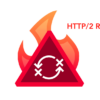Modern Networks Need Smart Filtering Tools that Boost Performance of Monitoring, Analytics and Security
The popularity of Software-as-a-Service (SaaS) applications combined with continuous additions of newly networked devices have added a strain to the traditional data center making it crucial for businesses to better manage the growing volume of network traffic. According to Cisco, annual global data center IP traffic will reach 10.4 zettabytes by the end of 2019, up from 3.4 zettabytes per year in 2014—that’s a three-fold growth in five years. Overall, data center workloads are expected to more than double by 2019. This will surely raise problems within the organizations accessing them if not properly managed.
Organizations that establish a solid network foundation today will out-secure, out-perform and outgrow their competition. That foundation starts with better management, control and filtering of traffic within highly congested data centers. Like designing traffic control systems to avoid vehicle gridlock at rush hours, a proper network foundation does the same for your data. Technologies like network packet brokers (NPBs) have emerged to address these issues, but just like your experience on your commute to work, some traffic control approaches are more effective than others. Here’s how can you tell the difference.
Facing the Need for Change
 Monitoring and securing modern network flows requires granular insight, only possible through sophisticated and automated analytics and security tools. It is no longer feasible to manually monitor and protect our networks without these tools, but each analysis, compliance and security appliance also add layers of complexity. That complexity could end up costing more than it contributes if it is not configured smoothly into the network. Enter smart filtering solutions.
Monitoring and securing modern network flows requires granular insight, only possible through sophisticated and automated analytics and security tools. It is no longer feasible to manually monitor and protect our networks without these tools, but each analysis, compliance and security appliance also add layers of complexity. That complexity could end up costing more than it contributes if it is not configured smoothly into the network. Enter smart filtering solutions.
Security and analytics tools can add a lot of value to your business—if they actually see the data they are supposed to see. But that’s no longer easy. Today, the goal is to gather, identify and intelligently distribute data in a way that gives simple but impactful choices to the network or security administrator. Sending every piece of data to every tool is not an effective solution. Why should each tool sift through an entire haystack of data looking for a needle when you can easily remove half before your search?
Sure, this may sound optional. Many could get by for months or even years without implementing any kind of intelligent filtering. They would just spend more time sifting the reams of data and false alerts at their tool end points. But there’s a better alternative: collect the data completely, then filter it intelligently.
For out-of-band performance monitoring, intrusion detection systems or analytics, network taps are used to replicate data flowing across individual segment points and send it to the necessary tools. Depending on where the taps are placed, you could end up with as much as 50 percent or more duplicate packets that each tool would then need to sort through. These duplicate packets are an unnecessary distraction, preventing the traffic monitoring tools from working at peak efficiency. Worse, it gives the illusion that there is more traffic than there really is, leading to additional investment in more tools to handle the perceived increased traffic load.
Distribution – the Foundation for Growth
We are all used to being forced to do more with less. One simple change at the foundation of your network could open a world of growth possibilities. If you could see more and secure more with less, why wouldn’t you?
When there is too much duplicate traffic, an NPB’s deduplication filter can significantly improve performance. With so many applications running in different locations, an NPB capable of identifying genuine applications using application filtering allows an organization to craft security policies that boost the performance of security tools like firewalls. And as bulk traffic migrates to SSL encryption, an NPB can decrypt the traffic and distribute clear traffic to monitoring tools, freeing them to focus on analysis
The NPB dramatically reduces troubleshooting time as “on-the-fly” rerouting to forensic tools and built-in packet capture are now possible. This significantly speeds the fault isolation and resolution process. In short, intelligent filtering in a network packet broker allows organizations to get more out of their security and monitoring tool investments. Easy programming, effective filtering, and intelligent data distribution lead to more effective network operation.
In the end, performance matters and customer satisfaction is key. Sending the right data to the right tool is critical for business success or issue resolution. Handling mass data distribution from a lot of sources can no longer be a manual process. The modern network needs smart filtering tools that boost the performance of network monitoring, analytics and security. Without a grid of traffic lights and a complex traffic control system working behind the scenes to manage them, city traffic gridlock would be exponentially worse. Why would you think it would be any different in the modern data center?















